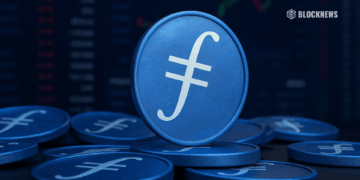- A trader swapped 131,350 USDR for $0 worth of USDC during the USDR stability crisis, resulting in a complete loss of investment.
- An MEV bot made a successful arbitrage trade during the crisis, making a profit of $107,002.
- Cases of poor liquidity during crises have been a significant challenge for traders on decentralized exchanges, leading to substantial losses.
During a liquidity crunch involving the real-estate-backed stablecoin, Real USD (USDR), a trader experienced a substantial loss. This article explores the details of how the trader swapped 131,350 USDR for $0 worth of USDC (USD Coin) and the circumstances behind this event.
The USDR Depeg Crisis
On October 11, the USDR stablecoin faced a crisis as it depegged from its par value by nearly 50%. This section delves into the reasons behind the depegging, liquidity issues, and the impact it had on user redemptions.
The Trader’s Unfortunate Swap
Amidst the USDR depegging, a trader made a crucial decision that led to a complete loss of investment. With 131,350 USDR in their possession, the trader swapped it for $0 worth of USDC through the decentralized exchange OpenOcean. This section examines the implications of the trade and the factors that contributed to the loss.
During the liquidity crisis, an MEV bot identified the discrepancy in USDR’s depegging and conducted an arbitrage trade. The bot managed to secure $107,002 in profits. This section explores the role of MEV bots in such situations and their impact on market dynamics.
Understanding the Liquidity Challenges
The lack of liquidity during such crises is a significant challenge for decentralized exchanges. With slippage reaching up to 100%, traders face the risk of substantial losses. This section highlights previous cases and incidents where poor liquidity impacted traders on DEX platforms.
The trader’s unfortunate swap of 131,350 USDR for $0 worth of USDC during the USDR depegging crisis highlights the challenges and risks faced by investors in the volatile world of stablecoins. This incident serves as a reminder of the importance of liquidity and the need for robust asset backing mechanisms to maintain stability and investor confidence.














